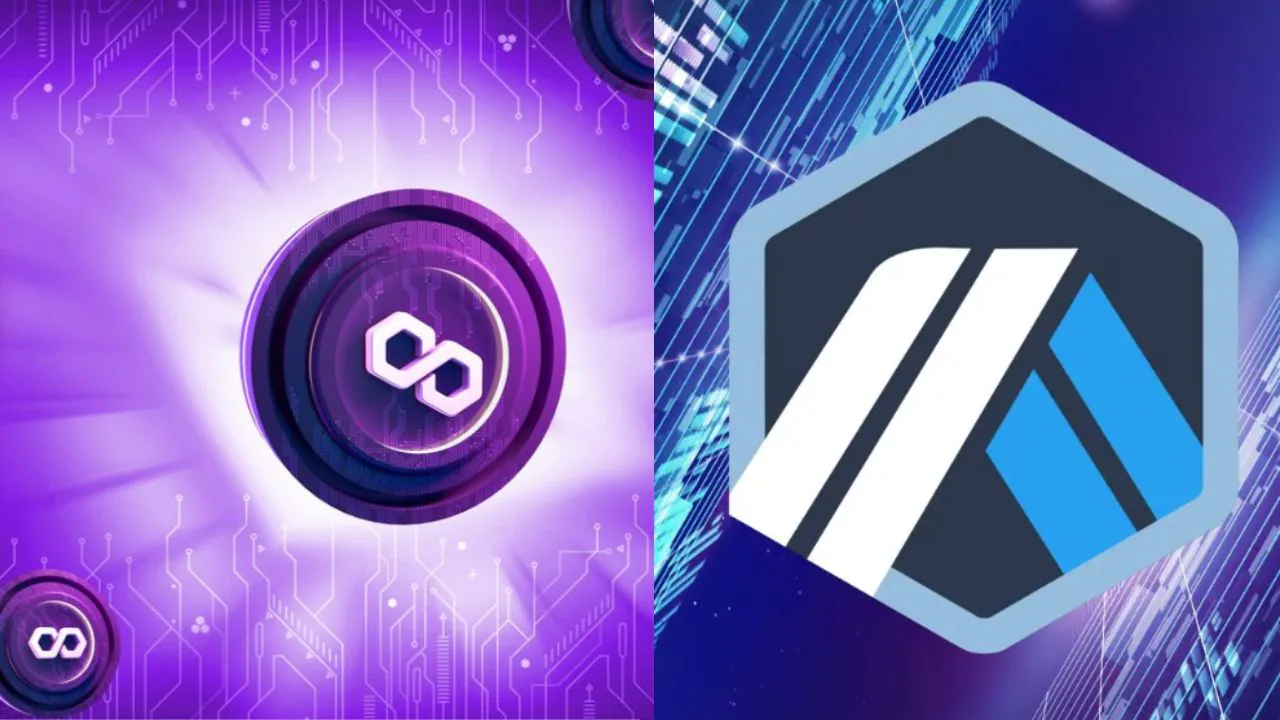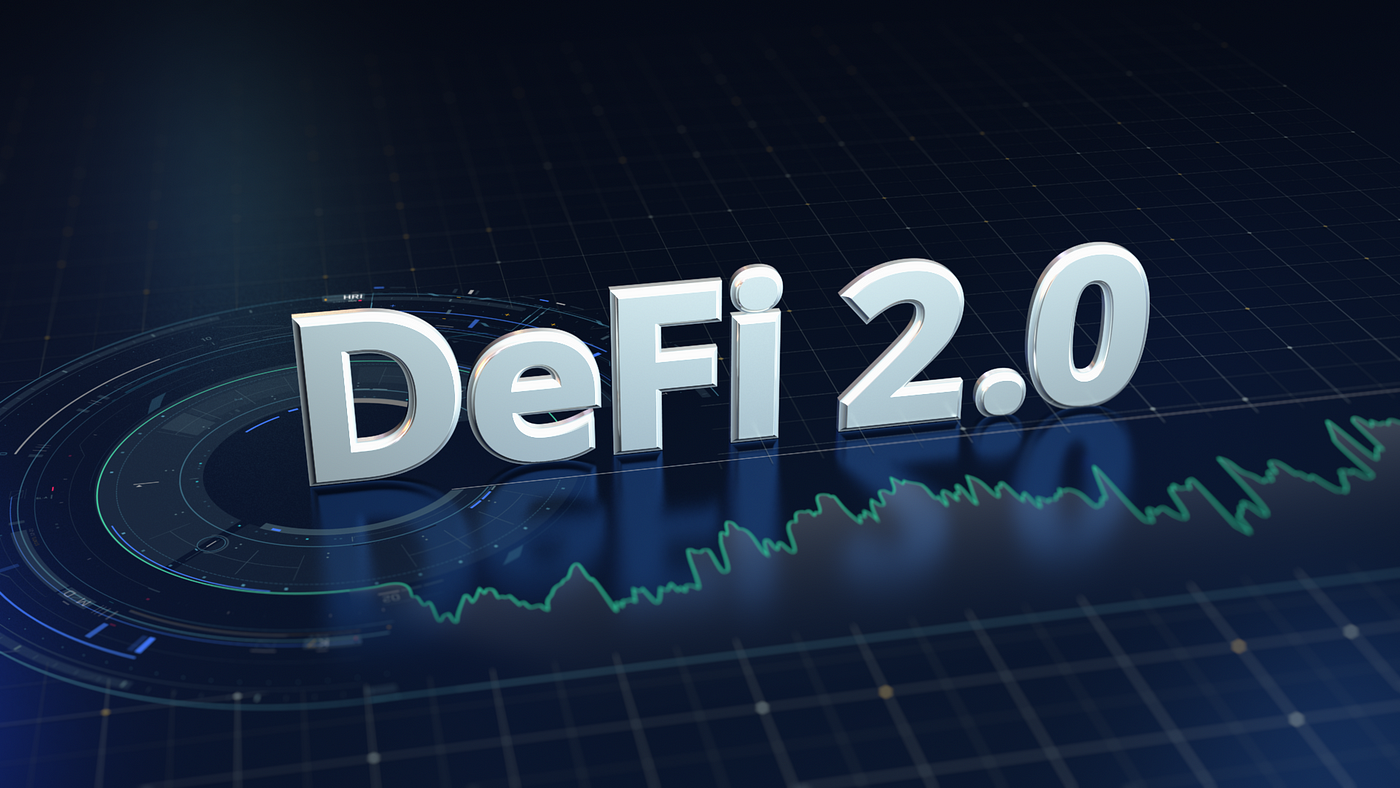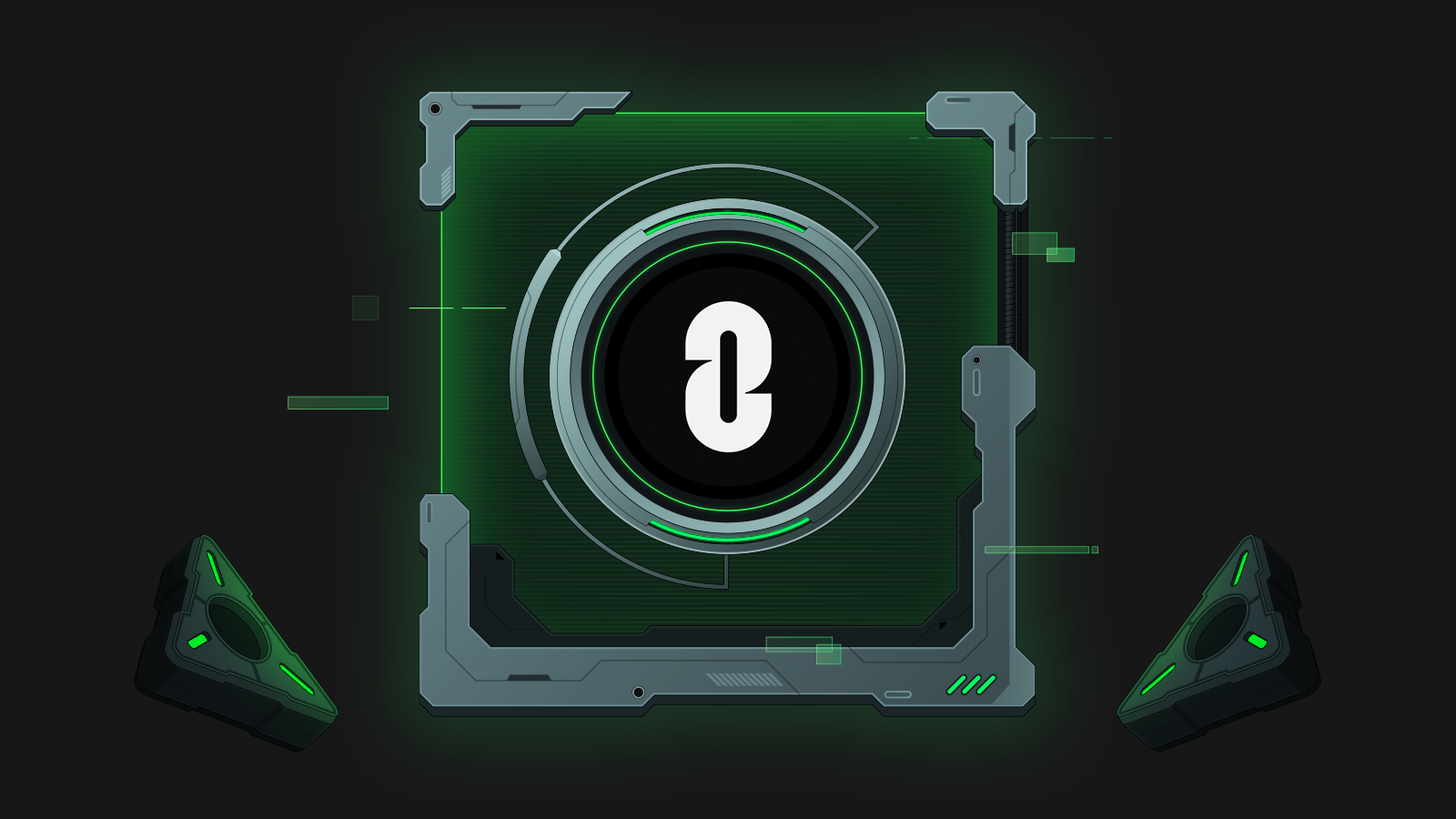How Polygon and Arbitrum are solving Ethereum’s scalability problem is a critical question as Ethereum remains a foundational pillar in the blockchain ecosystem
Its role in supporting decentralized applications (dApps), DeFi platforms, and the NFT market has led to widespread adoption, but also exposed its limitations. Increased activity has caused network congestion, high gas fees, and slow transaction speeds. While Ethereum 2.0 aims to resolve these scalability issues with future upgrades like Proof of Stake (PoS) and sharding, Layer-2 solutions like Polygon and Arbitrum have stepped in to address these problems in the interim.
In this article, we’ll explore how Polygon and Arbitrum are solving Ethereum’s scalability problem is by enhancing transaction speed and lowering costs without sacrificing the security Ethereum offers.
Ethereum’s Scalability Problem in Depth
Ethereum’s scalability challenges are a critical obstacle for the platform’s continued dominance in the blockchain space. As demand for decentralized applications (dApps), DeFi platforms, and NFTs grows, these limitations become even more pronounced. Let’s explore the core scalability issues in detail.
Transaction Throughput
One of Ethereum’s biggest scalability problems is its low transaction throughput. Currently, the Ethereum network can only process about 15 transactions per second (TPS), which is insufficient to support the massive number of users engaging with DeFi and NFTs.
This limited throughput is a major bottleneck that has led to network congestion during periods of high demand. How Polygon and Arbitrum are solving Ethereum’s scalability problem is by drastically increasing transaction capacity.
By moving transactions off the Ethereum main chain and onto Layer-2 platforms, they enable faster processing, bypassing Ethereum’s TPS limitations.
Gas Fees
Ethereum’s gas fees fluctuate based on network congestion. When the demand for transactions exceeds the available block space, users must compete to get their transactions processed by miners.
This results in soaring gas fees, making it costly for users to interact with the network, especially during peak times. For instance, during NFT drops or DeFi protocol launches, gas fees can skyrocket, pricing out many users.
How Polygon and Arbitrum are solving Ethereum’s scalability problem is by lowering these transaction fees. Their Layer-2 scaling solutions allow users to pay significantly lower fees by executing transactions off-chain and finalizing them on Ethereum with reduced cost.
User Experience
The combination of slow transaction speeds and high gas fees negatively impacts user experience, especially for developers and users in the DeFi and NFT ecosystems.
Developers face limitations in creating dApps that can scale to accommodate large numbers of users, while everyday users are deterred by the expensive and slow nature of the network. This hampers the overall adoption of Ethereum-based applications.
How Polygon and Arbitrum are solving Ethereum’s scalability problem is by offering an improved user experience. These Layer-2 solutions make it easier for developers to build scalable applications while providing users with faster, more affordable transactions.
What Are Layer-2 Scaling Solutions?
Layer-2 scaling solutions are innovative technologies designed to improve the performance and scalability of blockchain networks like Ethereum.
These solutions operate on top of the Ethereum mainnet, often referred to as Layer-1, and are specifically engineered to alleviate congestion, reduce gas fees, and increase transaction speeds.
By offloading some of the computational work and transactions away from Ethereum’s base layer, Layer-2 solutions significantly enhance the network’s capacity without compromising its security.
Layer-2 solutions process transactions off-chain, bundling them before submitting the final result back to the Ethereum mainnet for validation.
This reduces the load on Ethereum while maintaining the trust and decentralization of the underlying network. How Polygon and Arbitrum are solving Ethereum’s scalability problem is by functioning as Layer-2 networks that help Ethereum scale effectively, particularly in periods of high demand caused by DeFi and NFT activity.
Polygon: A Leading Layer-2 Solution

Polygon, formerly known as Matic, is one of the most prominent Layer-2 solutions. It offers a framework for building and connecting Ethereum-compatible blockchain networks.
How Polygon and Arbitrum are solving Ethereum’s scalability problem can be seen through Polygon’s ability to increase transaction throughput and reduce costs.
Polygon achieves this by providing a robust ecosystem of sidechains that work alongside Ethereum, allowing dApps and developers to operate without facing the same congestion issues present on Layer-1.
Arbitrum: Optimizing Ethereum’s Performance

Arbitrum is another leading Layer-2 scaling solution that leverages Optimistic Rollups to improve Ethereum’s performance. It processes transactions off-chain and only posts summaries of transactions back to Ethereum, drastically reducing gas fees and congestion.
How Polygon and Arbitrum are solving Ethereum’s scalability problem is evident in Arbitrum’s efficiency, allowing developers to build dApps that handle large-scale user engagement without being bogged down by Ethereum’s scalability limitations.
How Polygon is Solving Ethereum’s Scalability Problem
Overview of Polygon (Matic Network)
Polygon, formerly known as Matic Network, has emerged as one of the most popular Layer-2 solutions, designed to help alleviate Ethereum’s scalability issues.
Launched in 2017, it has grown rapidly, positioning itself as a go-to platform for developers seeking to build scalable decentralized applications (dApps) without the congestion and high costs associated with Ethereum.
How Polygon and Arbitrum are solving Ethereum’s scalability problem is by providing enhanced transaction speed, lower costs, and an overall improved user experience on Ethereum.
Polygon’s Architecture
Polygon’s architecture is built around its use of sidechains and plasma chains, which run parallel to Ethereum.
These sidechains handle a large number of transactions off-chain, allowing for quicker processing and significantly reduced gas fees.
Plasma chains, in particular, provide secure off-chain transaction processing that eventually settles on Ethereum’s mainnet.
How Polygon and Arbitrum are solving Ethereum’s scalability problem is by enabling transactions to be completed off-chain with finality secured on Layer-1, thus offering the best of both speed and security.
Key Features
- Transaction Speeds: One of Polygon’s standout features is its ability to process over 65,000 transactions per second (TPS), far surpassing Ethereum’s current limit of 15 TPS. This immense boost in speed is crucial to solving Ethereum’s bottleneck problem.
- Lower Gas Fees: Transactions processed on Polygon cost only a fraction of what they would on Ethereum’s mainnet. How Polygon and Arbitrum are solving Ethereum’s scalability problem is by reducing the cost burden on users, making DeFi and NFT transactions more accessible and affordable.
- Multi-chain Interoperability: Polygon provides developers with the flexibility to build and scale dApps that are interoperable across multiple blockchains. This compatibility strengthens Ethereum’s ecosystem and helps developers reach a wider audience.
Case Studies
Several popular dApps, such as Aave and Uniswap, have integrated with Polygon to improve their performance. These projects benefit from the faster transaction speeds and lower fees that Polygon offers.
How Polygon and Arbitrum are solving Ethereum’s scalability problem is evident in these integrations, where users enjoy quicker interactions and reduced costs when engaging with DeFi platforms and decentralized exchanges.
Impact on Ethereum’s Ecosystem
Polygon’s contribution to Ethereum’s ecosystem is substantial. By addressing congestion, it provides a more efficient and cost-effective experience for users, making Ethereum-based applications more attractive.
How Polygon and Arbitrum are solving Ethereum’s scalability problem is by ensuring that the Ethereum network can continue to grow and support an increasing number of dApps and users without being crippled by its inherent scalability limitations.
How Arbitrum is Solving Ethereum’s Scalability Problem
Overview of Arbitrum
Arbitrum is a leading Layer-2 scaling solution that leverages Optimistic Rollups to improve Ethereum’s scalability.
As one of the most prominent rollup technologies, Arbitrum enables faster, more affordable transactions while maintaining Ethereum’s security.
How Polygon and Arbitrum are solving Ethereum’s scalability problem lies in their ability to scale Ethereum without compromising decentralization or security.
By processing transactions off-chain and submitting them to Ethereum in batches, Arbitrum reduces congestion and enhances throughput.
Optimistic Rollups Explained
Optimistic Rollups operate by rolling up (or bundling) multiple transactions off-chain and then posting the summary of those transactions to the Ethereum mainnet.
The term “optimistic” refers to the assumption that off-chain transactions are valid by default, with mechanisms in place to challenge fraudulent transactions if necessary.
How Polygon and Arbitrum are solving Ethereum’s scalability problem is by utilizing this technique to dramatically reduce network congestion, making Ethereum much more efficient in processing transactions.
Key Features
- Scalability: Arbitrum offers significantly higher throughput compared to Ethereum’s Layer-1. With the ability to process thousands of transactions per second (TPS), Arbitrum eases the burden on Ethereum’s mainnet.
This improved scalability is critical for developers building DeFi platforms and other decentralized applications.
How Polygon and Arbitrum are solving Ethereum’s scalability problem is by allowing these Layer-2 platforms to handle larger transaction volumes without bottlenecks.
- Security: One of Arbitrum’s key advantages is that it inherits Ethereum’s robust Layer-1 security. While transactions are processed off-chain, they remain decentralized and protected by Ethereum’s consensus mechanism.
This ensures that users and developers can trust the integrity of their transactions. How Polygon and Arbitrum are solving Ethereum’s scalability problem is by maintaining this high level of security while still offering a faster, cheaper alternative to Ethereum’s base layer.
- Cost Efficiency: Arbitrum delivers lower transaction fees compared to Ethereum’s Layer-1, making it a cost-effective solution for both developers and users.
Unlike Ethereum, where gas fees spike during periods of high demand, Arbitrum’s off-chain processing allows for much more predictable and affordable fees.
How Polygon and Arbitrum are solving Ethereum’s scalability problem is by offering a scalable, low-cost alternative to Ethereum’s expensive gas structure.
Case Studies
Several high-profile projects, such as SushiSwap and Offchain Labs, are utilizing Arbitrum to scale their operations.
These projects have integrated Arbitrum to improve their transaction throughput and reduce costs, all while maintaining Ethereum’s security benefits.
How Polygon and Arbitrum are solving Ethereum’s scalability problem is showcased in these real-world applications, where developers can seamlessly scale their dApps without worrying about congestion or exorbitant fees.
Impact on Ethereum’s Ecosystem
Arbitrum plays a vital role in improving Ethereum’s usability for both developers and everyday users.
By reducing gas fees and increasing transaction speeds, it makes Ethereum more accessible for a broader range of applications, especially in the DeFi space.
How Polygon and Arbitrum are solving Ethereum’s scalability problem is through their complementary approaches, ensuring that Ethereum remains the go-to platform for decentralized innovation while overcoming its inherent limitations.
Comparing Polygon and Arbitrum: Which is More Effective?
As Ethereum continues to face scalability challenges, two prominent Layer-2 solutions, Polygon and Arbitrum, have emerged to address these issues.
To understand how Polygon and Arbitrum are solving Ethereum’s scalability problem, it’s crucial to compare their mechanisms, performance, and adoption rates.
Consensus Mechanisms
The primary distinction between Polygon and Arbitrum lies in their consensus mechanisms. Polygon operates as a network of sidechains, meaning it creates independent blockchains that run parallel to Ethereum.
This design allows for increased transaction throughput but requires users to trust the sidechain’s security model. On the other hand, Arbitrum utilizes Optimistic Rollups, which batch multiple transactions and post them to Ethereum for final validation.
This method ensures that while transactions are processed off-chain, they are secured by Ethereum’s Layer-1 consensus.
How Polygon and Arbitrum are solving Ethereum’s scalability problem is evident in their different approaches to handling transactions and maintaining trust within the ecosystem.
Transaction Speed & Costs
When comparing transaction speed and costs, Polygon shines with its impressive capability to process over 65,000 transactions per second (TPS), while Arbitrum can handle thousands of TPS as well.
In terms of gas fees, both platforms significantly reduce costs compared to Ethereum’s Layer-1. However, Polygon generally offers lower fees due to its sidechain model, making it a more attractive option for high-frequency traders and smaller transactions.
How Polygon and Arbitrum are solving Ethereum’s scalability problem is through their ability to facilitate rapid transactions at a fraction of the cost, providing alternatives to Ethereum’s high gas fees.
Security Models
Security is a critical aspect of any blockchain solution. Polygon’s sidechain architecture means that each sidechain operates independently, which can introduce potential security vulnerabilities if not properly managed.
However, it benefits from Ethereum’s overall security model since the main Ethereum chain still validates the transactions processed on these sidechains.
In contrast, Arbitrum leverages Ethereum’s Layer-1 security model directly, ensuring that all transactions are ultimately validated by Ethereum.
This architecture enhances trust and security for users. How Polygon and Arbitrum are solving Ethereum’s scalability problem can be seen in their unique approaches to maintaining robust security while optimizing performance.
Developer Ecosystem
The developer experience is also crucial for the success of any Layer-2 solution. Both Polygon and Arbitrum offer extensive support for dApp development, with robust developer tools and documentation.
Polygon’s sidechain model allows for easy integration and flexibility for developers, while Arbitrum offers a more familiar environment for those already accustomed to working with Ethereum’s infrastructure.
Moreover, both platforms provide incentives for builders, although Polygon has a broader ecosystem of tools and resources.
How Polygon and Arbitrum are solving Ethereum’s scalability problem is reflected in their commitment to fostering innovation and usability for developers.
Adoption Rate
Adoption rates for both Polygon and Arbitrum have been impressive, but they differ in their focuses. Polygon has gained traction in various DeFi and NFT projects, hosting platforms like Aave and OpenSea, which benefit from its lower fees and high throughput.
Arbitrum, meanwhile, has also seen significant adoption, with projects like SushiSwap and Offchain Labs leveraging its rollup technology.
How Polygon and Arbitrum are solving Ethereum’s scalability problem is evident in their ability to attract a diverse range of projects, contributing to Ethereum’s broader ecosystem.
Future Potential
Looking ahead, both Polygon and Arbitrum present sustainable models for Ethereum’s future. Polygon’s flexibility and extensive ecosystem make it well-positioned for ongoing growth, while Arbitrum’s direct integration with Ethereum’s security model enhances its appeal for projects prioritizing security and trust.
How Polygon and Arbitrum are solving Ethereum’s scalability problem will continue to evolve as they adapt to the changing landscape of blockchain technology.
Ultimately, the choice between Polygon and Arbitrum may come down to specific use cases and the priorities of developers and users within the Ethereum ecosystem.
Conclusion
In conclusion, both Polygon and Arbitrum are pivotal in addressing Ethereum’s core scalability issues. By leveraging distinct technologies—Polygon with its sidechains and Arbitrum with its Optimistic Rollups—these Layer-2 solutions effectively enhance transaction speeds and significantly reduce gas fees.
How Polygon and Arbitrum are solving Ethereum’s scalability problem is evident in their ability to facilitate a more efficient and cost-effective user experience.
These solutions are not just technical improvements; they play a critical role in maintaining Ethereum’s dominance in the blockchain space.
As Ethereum faces increasing adoption and the growing demands of DeFi and NFT ecosystems, the ability to provide seamless and affordable transactions becomes essential.
How Polygon and Arbitrum are solving Ethereum’s scalability problem ensures that Ethereum can continue to support innovative applications and services while remaining accessible to users around the globe.
As we move forward, it’s vital for developers and users to explore Layer-2 solutions like Polygon and Arbitrum.
Whether you’re looking to build decentralized applications or simply seeking a more efficient way to transact on Ethereum, these platforms offer promising avenues for scalability and innovation.
How Polygon and Arbitrum are solving Ethereum’s scalability problem should inspire you to dive deeper into these technologies and consider the exciting possibilities they present for the future of blockchain development.



